Sigma A 20 mm f/1.4 DG HSM
3. Build quality
In the photo below the Sigma A 1.4/20 is positioned next to its cousin with a bigger focal length so the A 1.4/35.
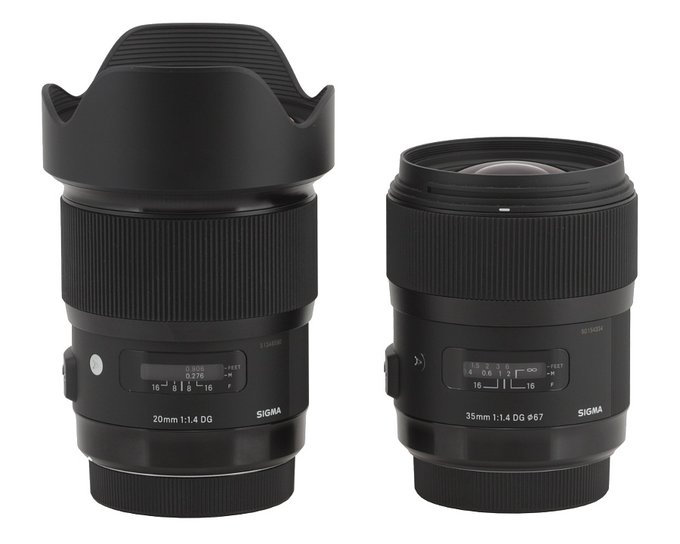 |
Please Support UsIf you enjoy our reviews and articles, and you want us to continue our work please, support our website by donating through PayPal. The funds are going to be used for paying our editorial team, renting servers, and equipping our testing studio; only that way we will be able to continue providing you interesting content for free. |
- - - - - - - - - - - - - - - - - - - - - - - - - - - - - - - - - - - - - - - - - - - - - - - -
The tested lens starts with a metal mount which surrounds the contacts and a rear element which is less than 33 mm in diameter. That element moves; it is positioned on the same level as the contacts at infinity. When you pass to the minimum focusing distance it hides inside the casing near 0.5 cm deep. It is surrounded by a ribbed tube which is darkened and matted very well. Between the tube and the edge of the element there are no slits. The front element is immobile for a change; it means that the focusing shifts the whole optical system and the focal length changes as well.
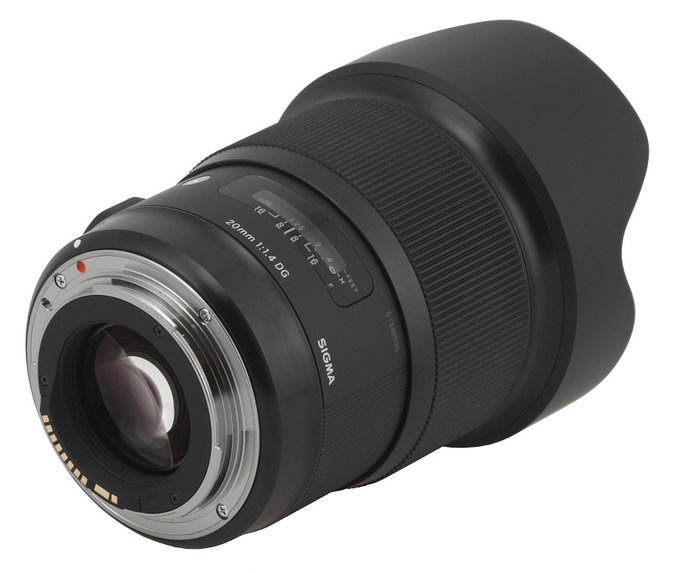 |
The proper body of the lens starts with a black, shiny metal ring on which there is a white dot, making the alignment with a camera easier, and “015” – the number indicating the year of launch. Further on you see an inscription with the name and parameters of the lens under which there is a distance scale behind a window, expressed in feet and in meters. Below there is a depth of field scale but with markers just for f/8.0 and f/16. On the left side of the scale there is an “A” letter, meaning the lens belongs to the “Art” group along an inscription “MADE IN JAPAN” and a focusing mechanism mode switch (AF/MF).
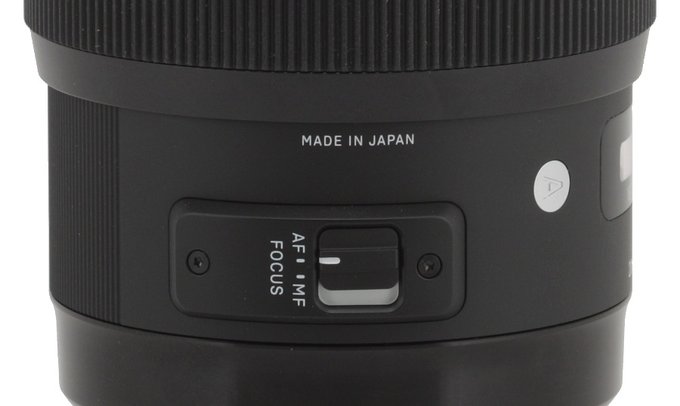 |
Then you see a huge manual focus ring, as wide as 40 mm, almost entirely covered by comfortable rubber ribs. The ring moves smoothly and is well-damped; still it’s a pity that running through the whole distance scale needs a turn through an angle of just 100 degrees. In order to set the focus with good precision you would need a value closer to 120-150 degrees.
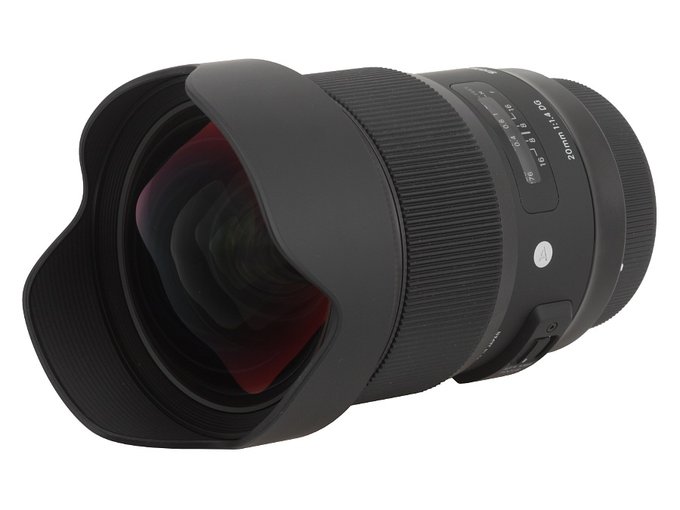 |
Right behind the manual focus ring the lens turns smoothly into a built-in hood mount. The front element of the lens is over 7 cm in diameter, very convex and immobile; you don’t have any possibility to attach filters.
The outline of the optical construction of the Sigma A 20 mm, like the construction of other devices belonging to the Art series, is very impressive – you can find it presented in a form of a drawing, shown below.
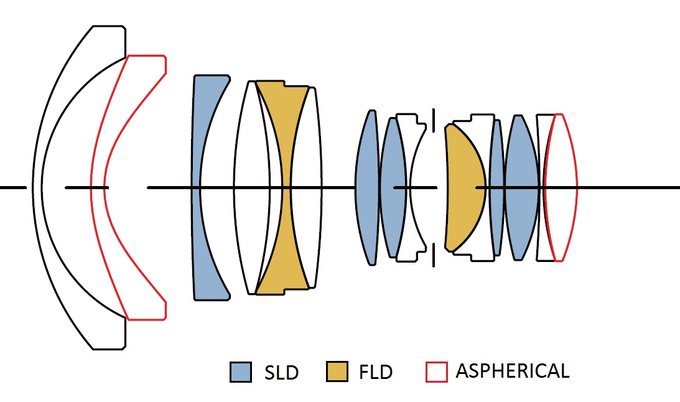 |
You deal here with 15 elements positioned in 11 groups with a lot of special elements. Overall in the lens you find two elements were made of FLD glass with the properties of fluorite, as many as 5 elements are made of classic low dispersion SLD glass and two aspherical ones. Inside the lens you also find an aperture with nine blades which can be closed down at the maximum to a value of f/16.
Buyers get both caps and a hard case in the box.
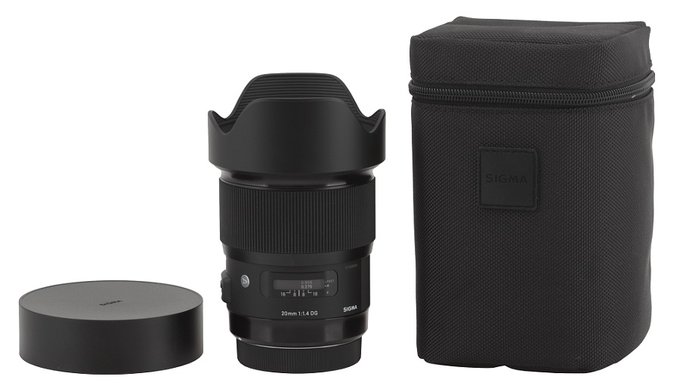 |






